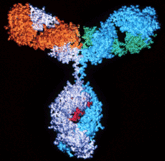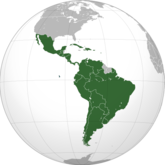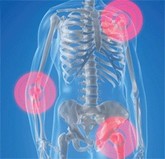Reports
Biopharmaceutical industry in Brazil in the 21st century
In Brazil, the approach of the Industrial Economic Complex of Health (Complexo Econômico-Industrial da Saúde, CEIS) has been adopted in the planning of policies related to the health economy. This involves the integration of health, industrial and innovative policies.
Biopharmaceutical industry in Argentina and Brazil: a 21st century perspective
The biopharmaceutical industries in Latin American countries have gained significant attention in recent years, with an important growth in Argentina and Brazil where the policies implemented have emphasized collaboration between the public and private sector.
Pharmaceutical companies in China manufacturing copy biologicals
The market for copy biologicals in China has significantly grown over the past decade. The government has been actively promoting the development and use of copy biologicals as a way to improve access to affordable health care. As a result, the number of pharmaceutical companies developing copy biologicals has also increased rapidly and is expected to continue to grow in the coming years.
Biosimilars for chronic disease patients
A report which analyses significant developments in the biosimilar space and the impacts on patient access, affordability and quality of care has been released in early 2023. The report is a product of the Patient Access and Affordability Project, a programme of Patients Rising, a non-profit organization.
Study of the use of generic and biosimilar drugs in Latin America
The results of a study on the knowledge, perceptions and use of generic and biosimilar drugs in Latin America and the Caribbean were recently presented at an event organized by the World Bank during the workshop ‘Rethinking Pharmaceutical Policies in Latin America and the Caribbean’ held in Washington DC, USA.
The successful uptake of biosimilars in Europe and the US
US uptake of biosimilars is now beginning to rival that of Europe. This was a take home message from the June 2022 Alliance for Safe Biologic Medicines (ASBM) webinar on the successful uptake of biosimilars in Europe and the US [1].
Biosimilar monoclonal antibodies in China
Biosimilar monoclonal antibodies (mAbs) are currently a major focus of research and development in China with policies support. mAbs have become crucial therapeutics for treating diseases such as oncology and autoimmune diseases. As competition from biosimilars increases in China, the price of mAbs is decreasing and access to them is increasing.
Biological therapies in patients with rheumatoid arthritis
A study on the estimation of patients with rheumatoid arthritis (RA) as well as those patients who are potentially eligible for the treatment of the disease with biological drugs, was presented by Luca Degli Esposti of CliCon Società Benefit Italy at the 18th Biosimilar Medicines Conference in October 2022.
Highlights of the revised WHO guideline on evaluation of biosimilars
A presentation by Niklas Ekman from the Finnish Medicines Agency during the 18th Biosimilar Medicines Congress in October 2022 in Brussels, Belgium reviewed the key elements of the revised World Health Organization (WHO) Guideline on evaluation of similar biotherapeutic products (SBPs, also called biosimilars) and gave a possible direction for biosimilar regulation in the EU [1].
Estimation of patients potentially eligible to biological therapies
A study on the estimation of patients with psoriasis, rheumatoid arthritis and inflammatory bowel diseases as candidates for biological therapies was presented by Luca Degli Esposti of CliCon Srl Società Benefit Italy at the 18th Biosimilar Medicines Conference which took place in Brussels, Belgium on 6‒7 October 2022.












